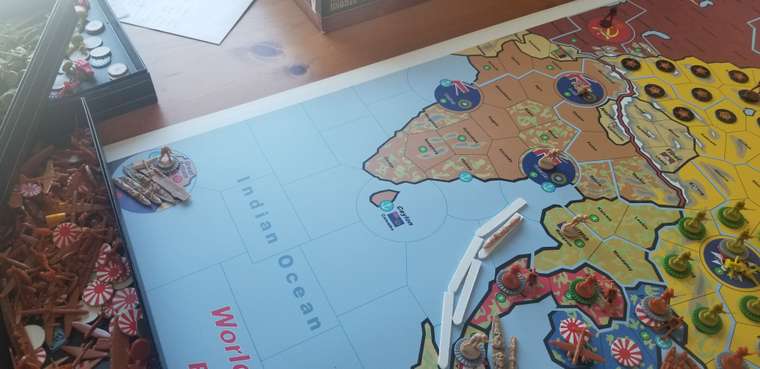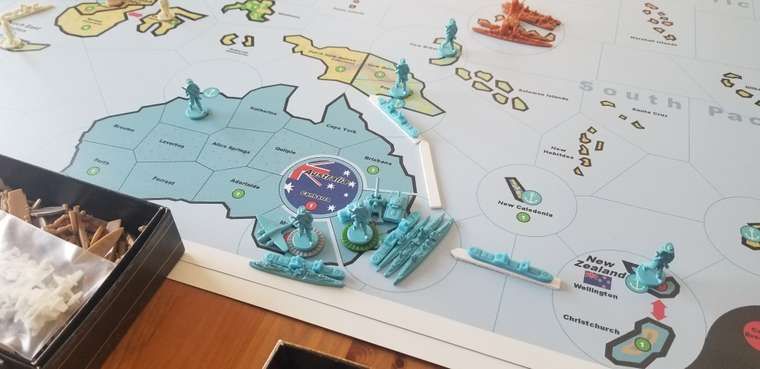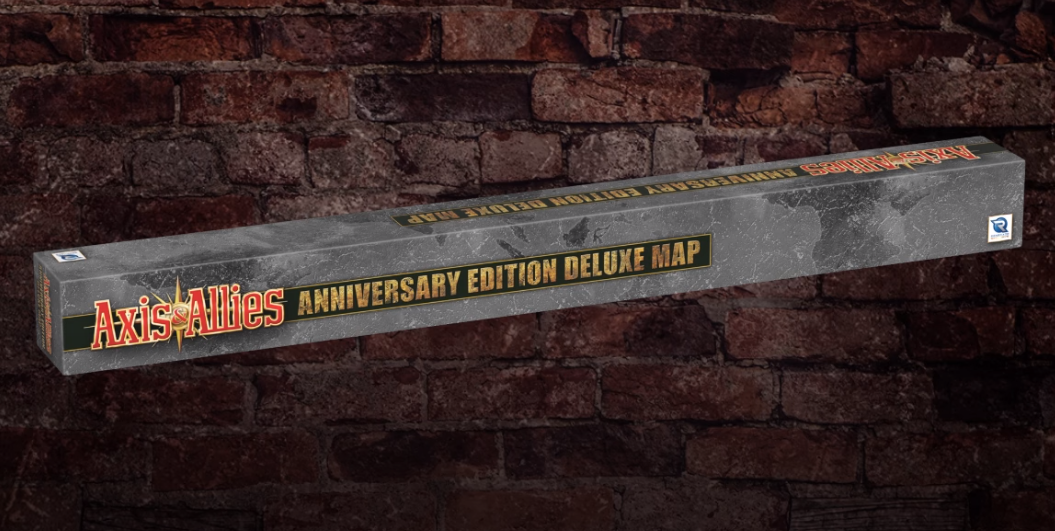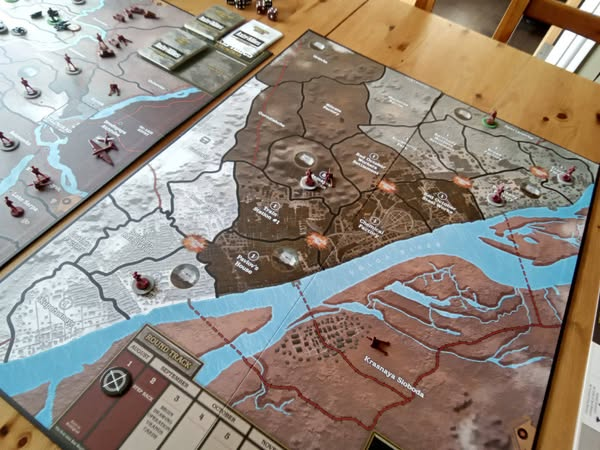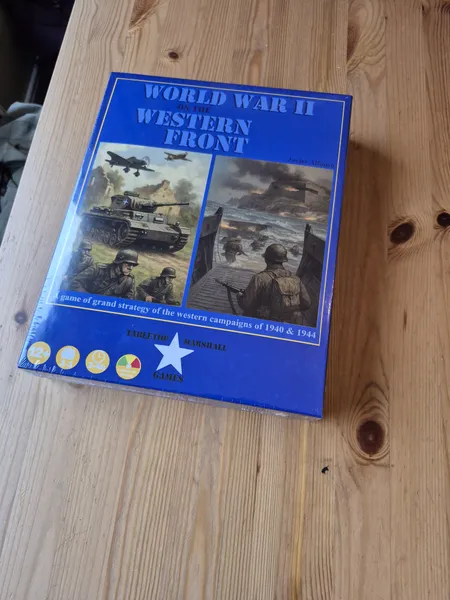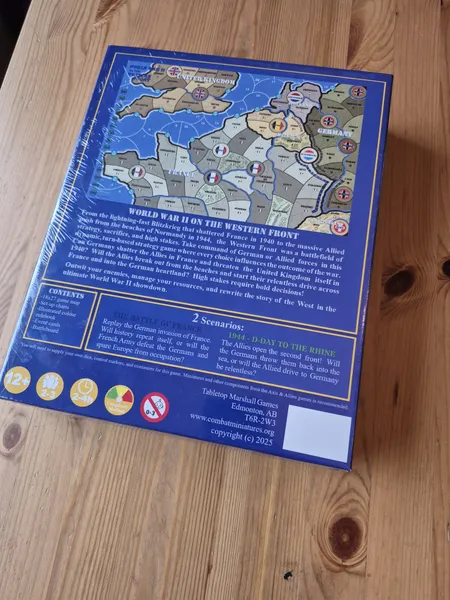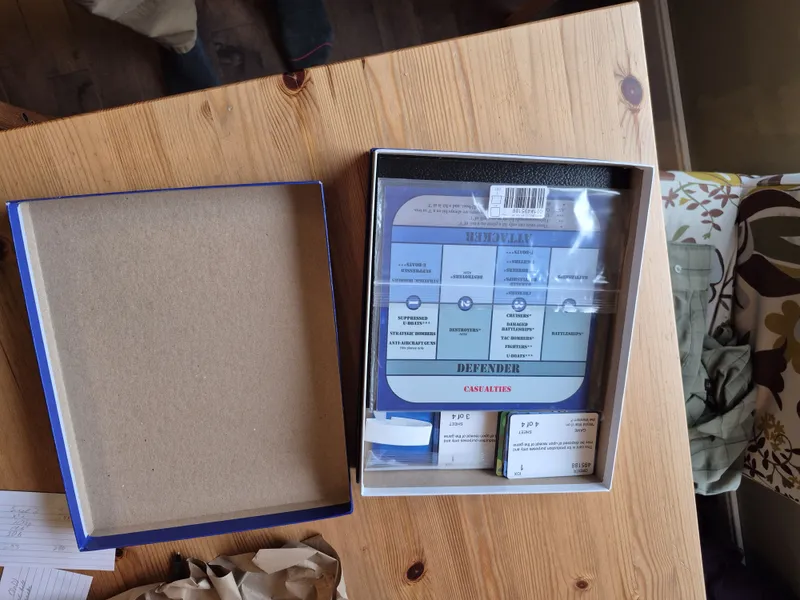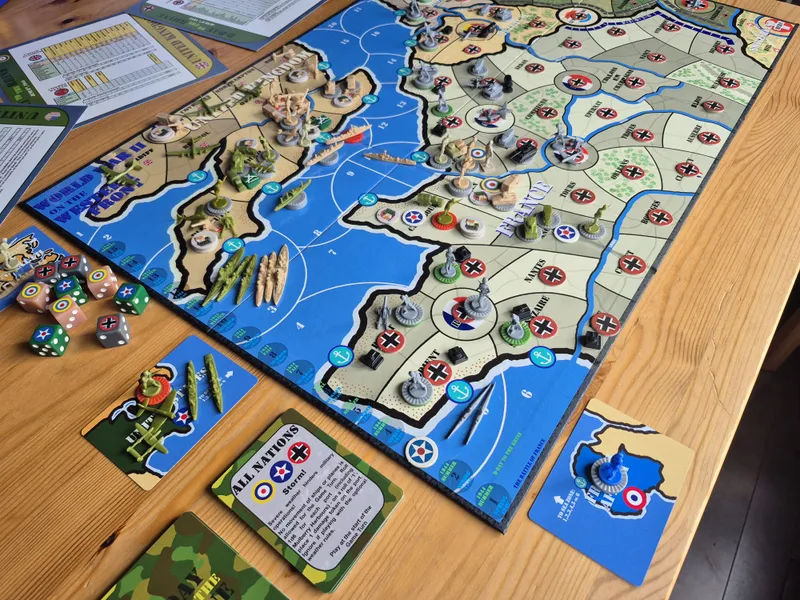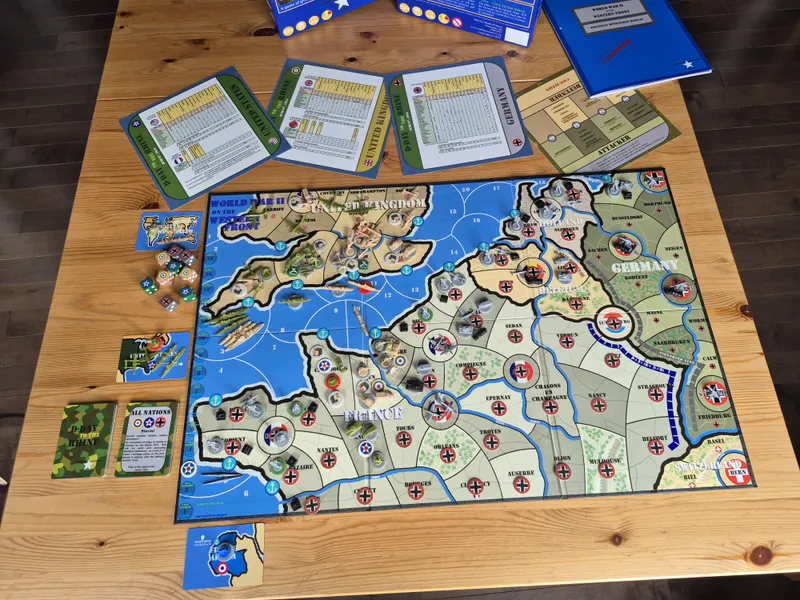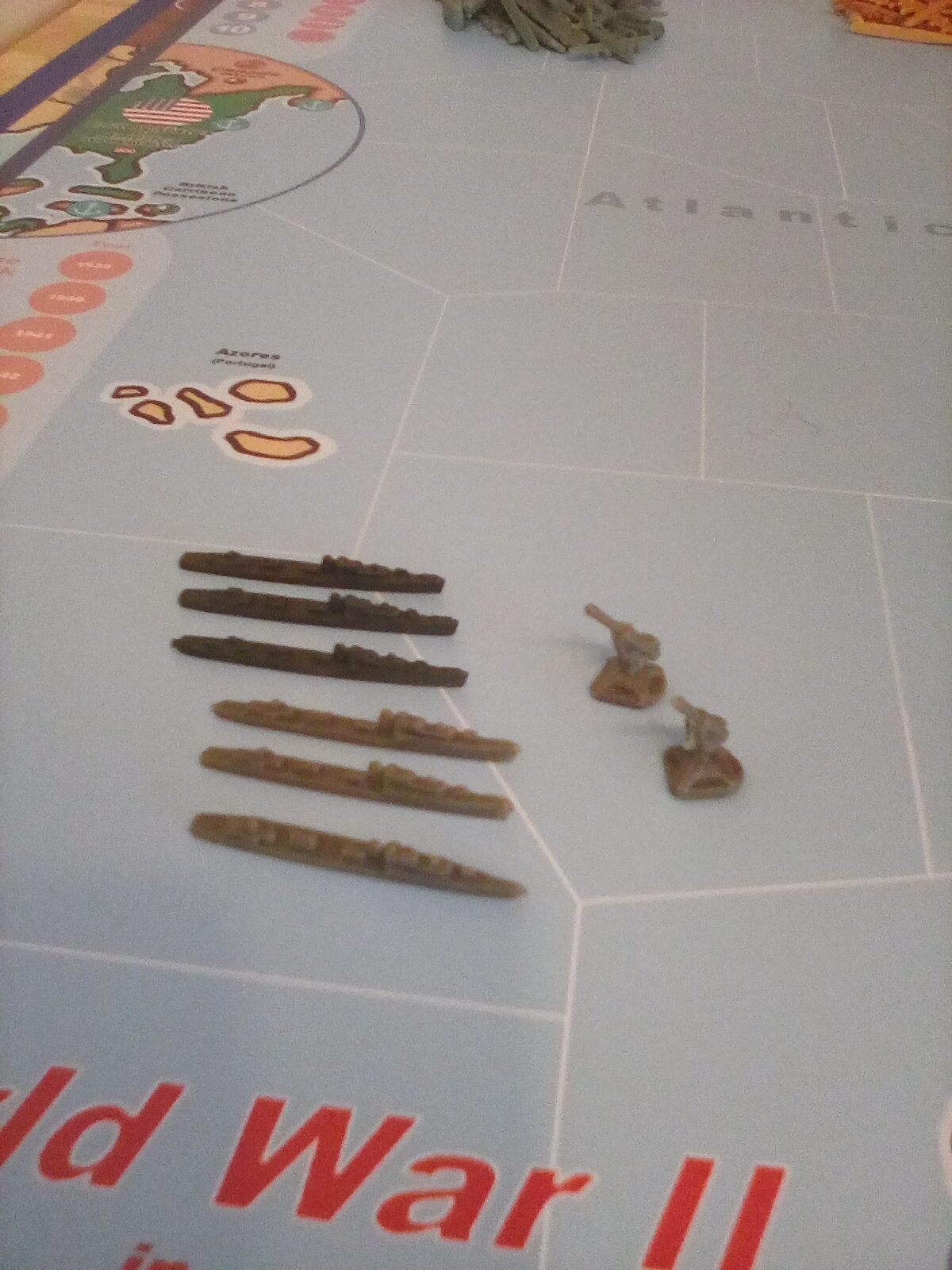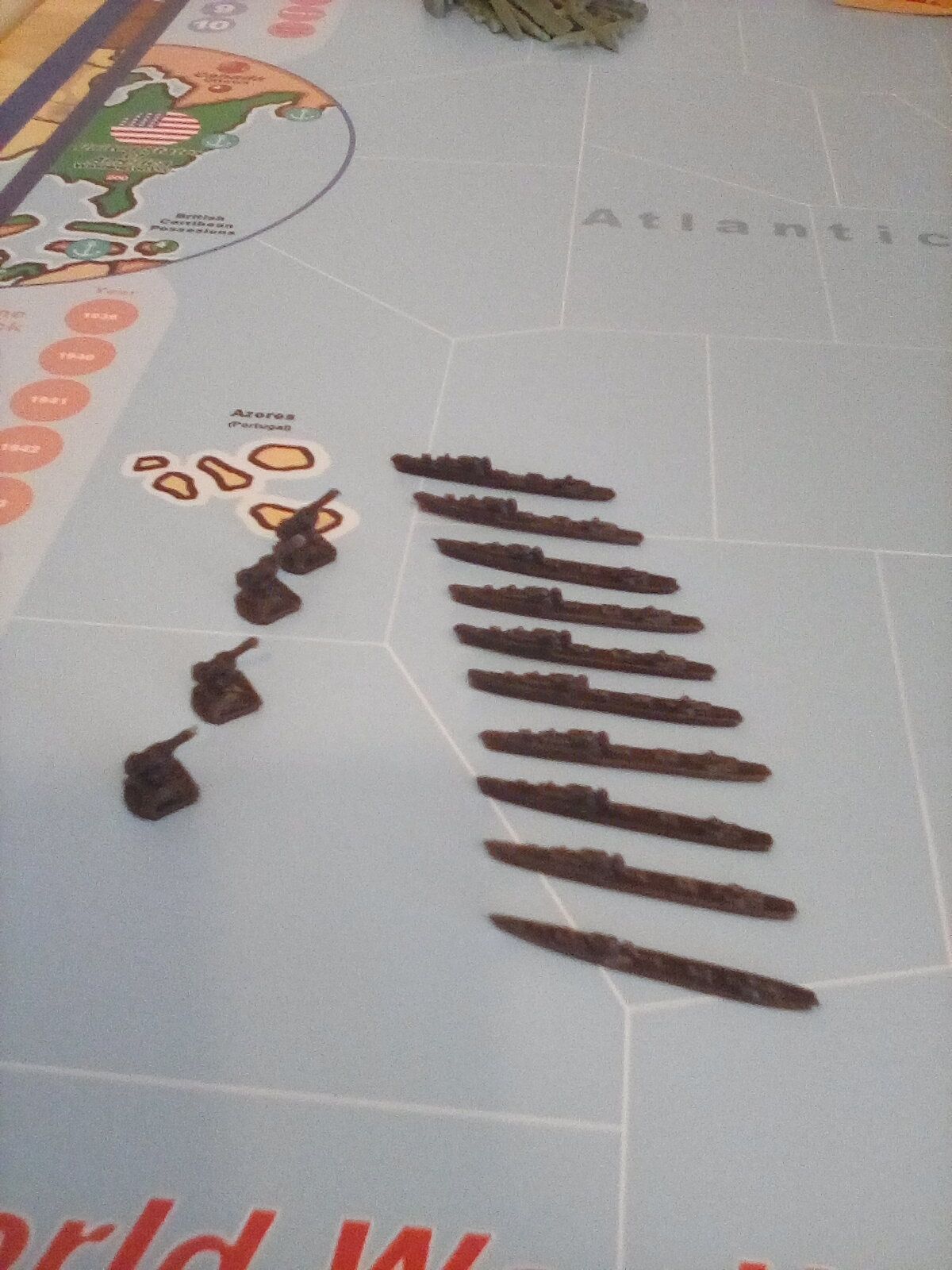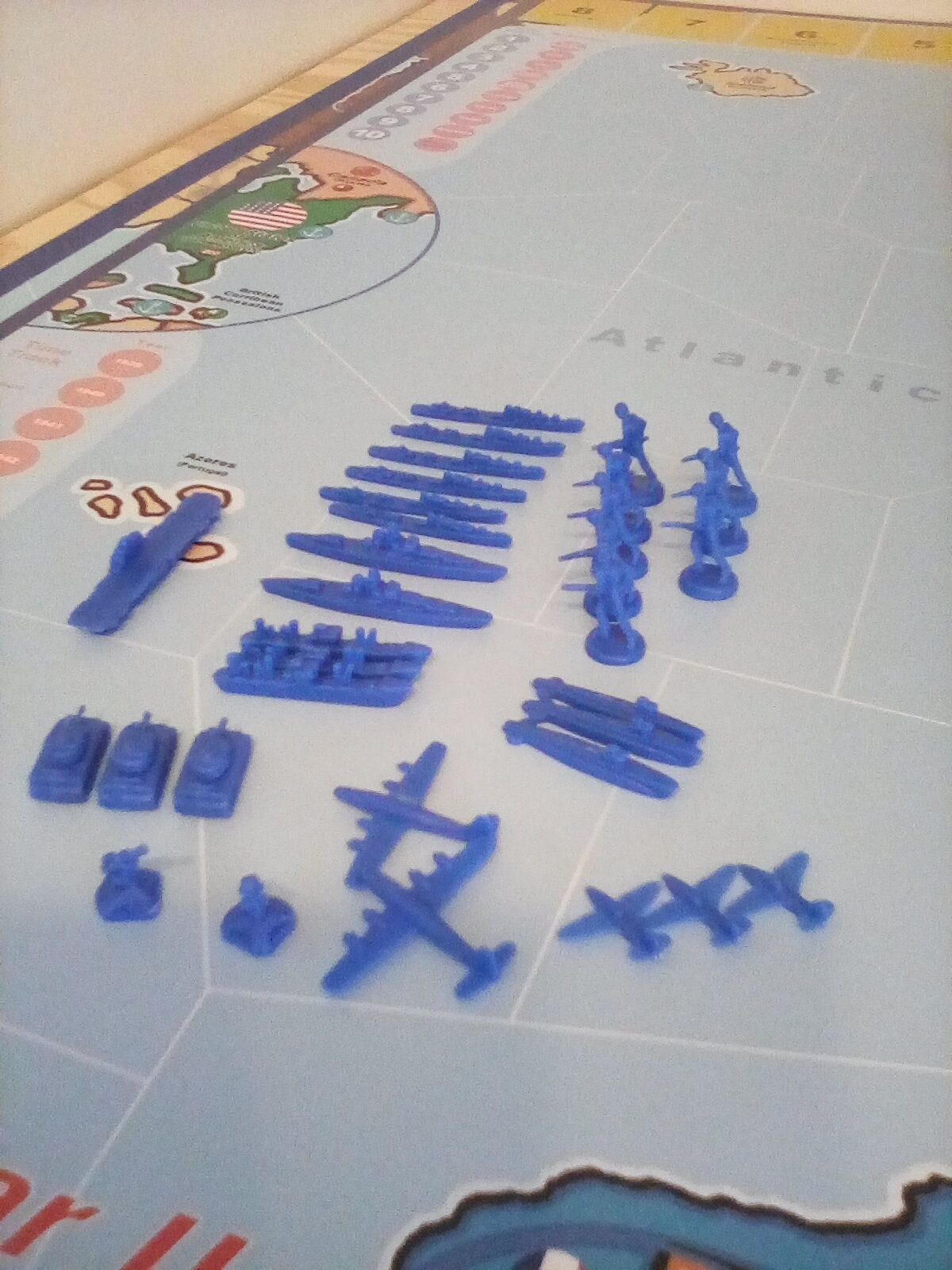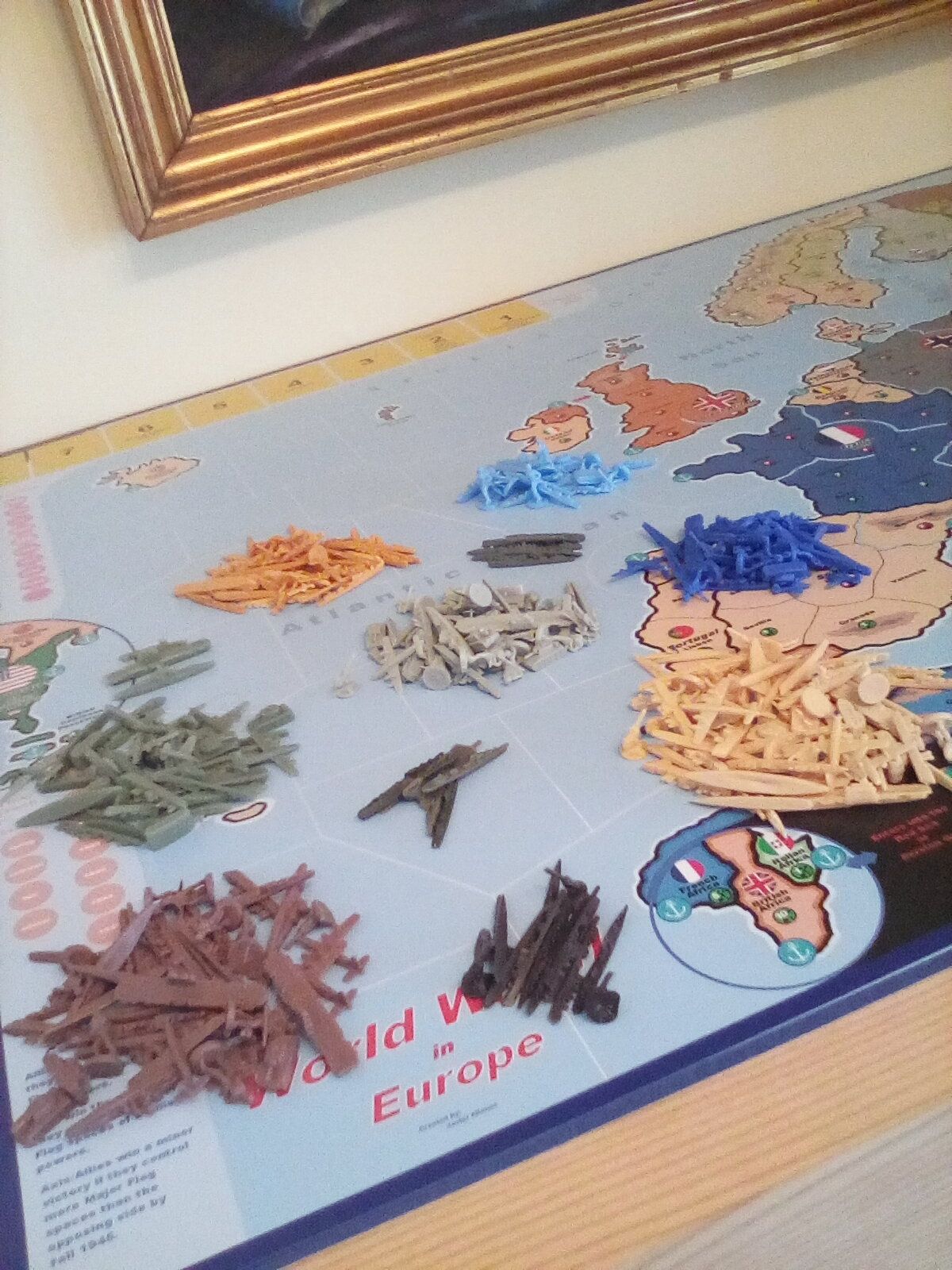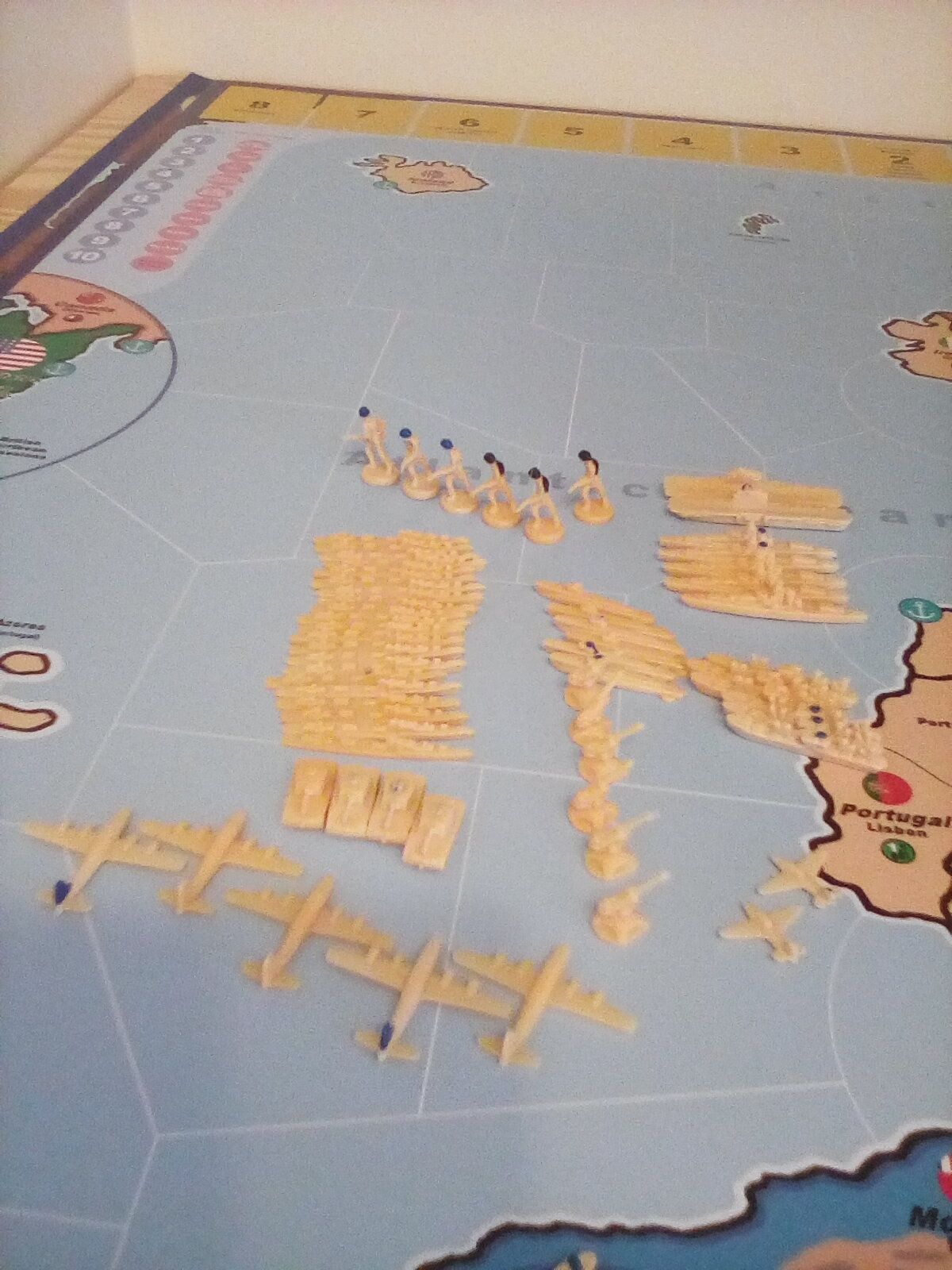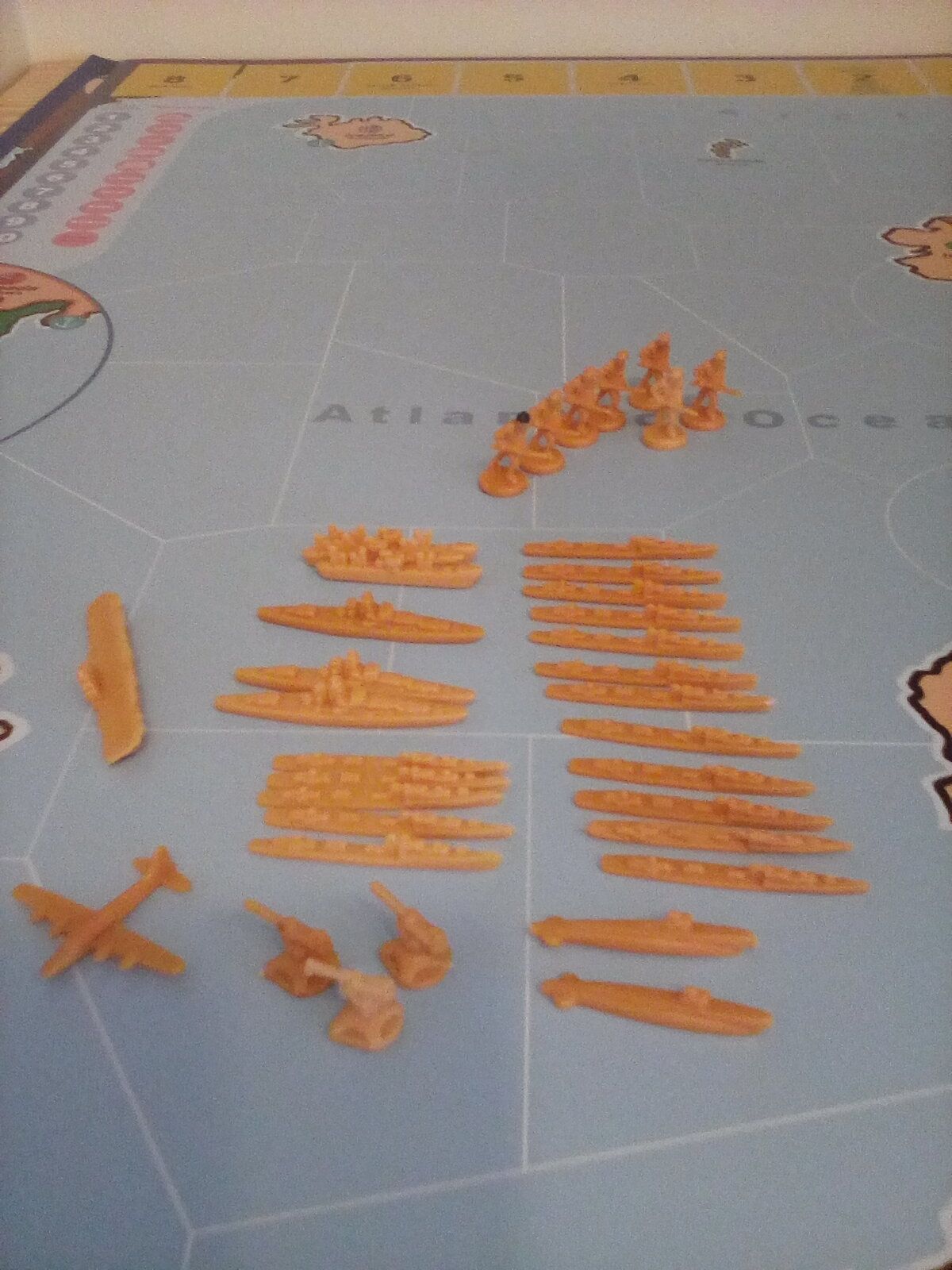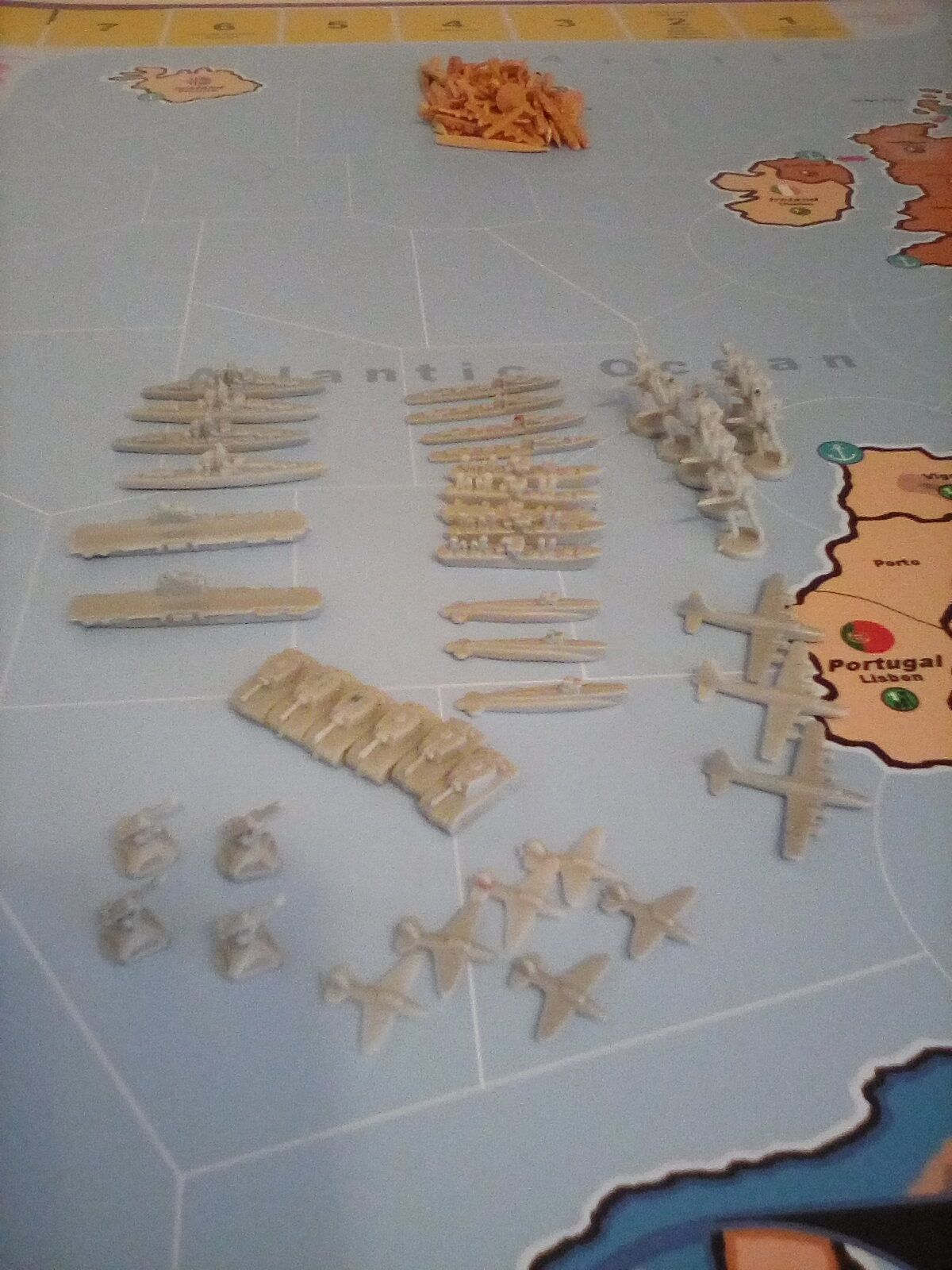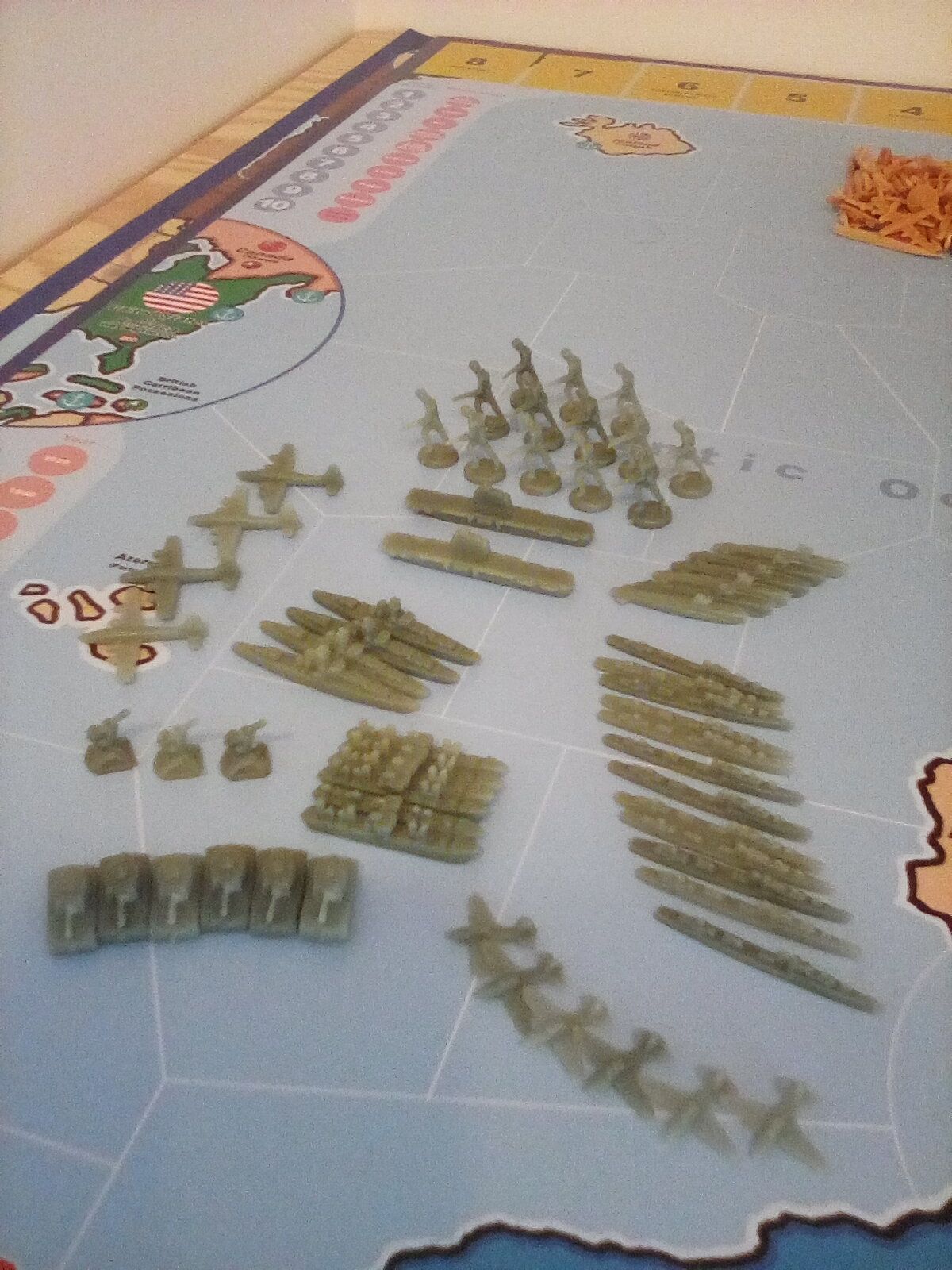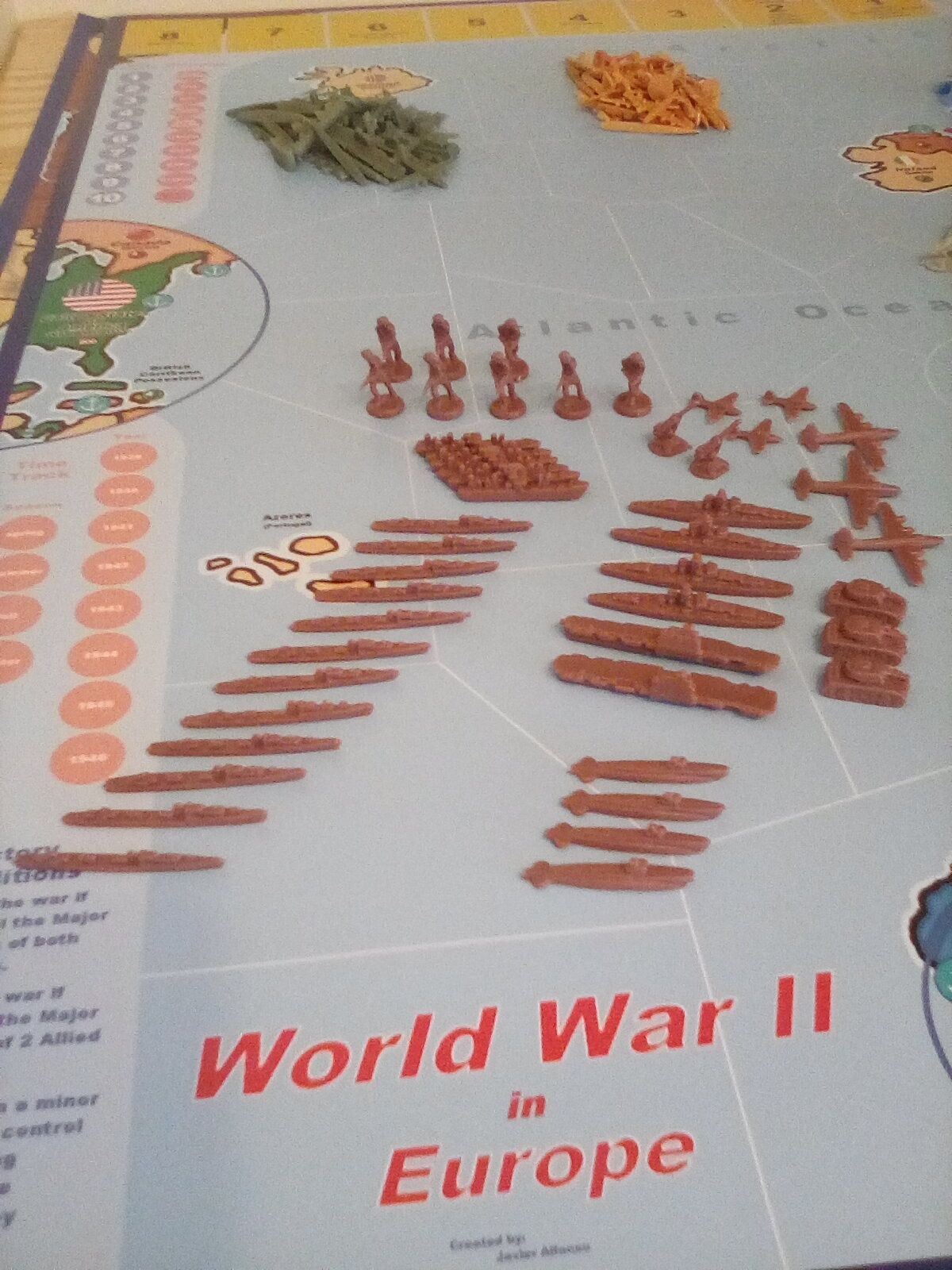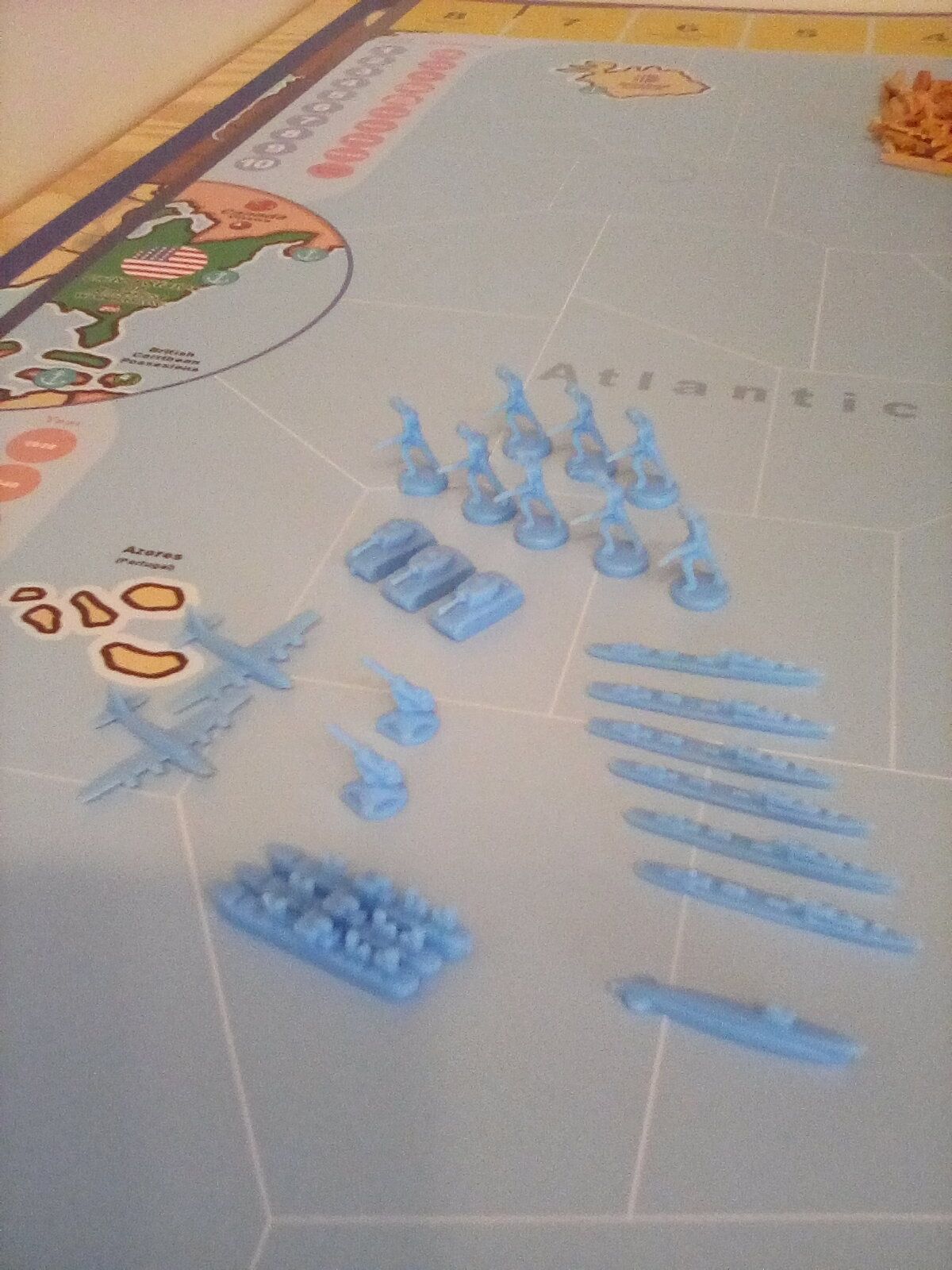Q.
Well this FAQ has certainly been helpful. Hopefuly we can have something written out by Friday? (at least the major issues)
A.
There will not be anything “official” by Friday, as we like to wait a while before publishing an official FAQ to see what issues pop up. However, I will summarize the three errors in the Rulebook and the half dozen clarifications that I’ve made so far by then.
Q.
Has Krieg answered if battleships can repair at friendly ports? (not just their own)
A.
Yes, they can. This is one of the errors I mentioned above - battleships can be repaired at any friendly naval base that is capable of mobilizing sea units. The other two errors are that the US can’t move units into neutral territories while it is neutral, and you must have been in control of a naval base at the beginning of your turn in order to mobilize sea units from it.
Note that control of a naval base is not the same as control of the territory that it’s in. You control a naval base if you either control the territory it’s in or that territory is one of your original territories and it’s contested.
Q.
This came up last night: Italy (on the same turn) took control of Trieste (by an unopposed land movement from Albania) and sailed a fleet into SZ 18.
Does Austria roll for mines against the Italian ships? My presumption is yes, since Trieste is Austrian controlled at the start of the Italian turn.
That is, all combat is considered simultaneous.
A.
Yes. Italy doesn’t gain control of the territory until the Conduct Combat phase.
Q.
To what extent does a fleet have to declare its intentions for a 2 space move?
I assume that a fleet sailing into enemy SZs can, if it hits mines in the first, decide not to continue to a 2nd even if it originally intended to.
But what if it intended to amphibiously assault after the 2nd move; is it still legal to call off the attack?
Example: Russian fleet sailing from Petrograd intending to AA Kiel but suffering from mines in SZ 11.
A.
Mines are rolled for after ship movement is completed, so you can’t stop moving if you hit a mine in the first sea zone. You can, however, call off an amphibious assault.
Q.
Are contested sea zones treated exactly as per contested land areas for movement purposes?
A.
There is no such thing as a contested sea zone. Sea zones are either friendly or hostile, depending on the presence of enemy surface warships.
Q.
I guess to summarize, does control default to the original owner regardless of how the territory became contested?
A.
Yes.
Q.
OK, wrong terminology; what I meant was can a fleet sharing SZ1 with an enemy fleet sail away and attack an enemy fleet in SZ2 ignoring the enemy in SZ1?
A.
Yes.
Q.
Sorry if this has been asked already. I have some questions about amphibs asssults, air support and the order.
In an amphib does the defenders first strike art shot (kill shot) happen before the dog fight, or after the dog fight?
Sorry if there is more in the rule book about this, I very well may have missed it. What I’ve read about def first strike art don’t mention air support (just says fire a kill shot at 3 or less). Plus and an attacking ftr offloading from a transport could be lost to def first strike art fire so there might not be a dog fight (from this thread?). I’m amusing the first strike art shot is done before the dog fight (and that’s what I used below), of course if the dog fight was done first, them wouldn’t it upgrade you def art for a kill shot @ 4 or less? (I’m so confused).
So you would do
- Navy battle (if applicable).
- Bombardment (if applicable).
- Off load attackers units from transport
- Defenders first strike art shot @ 3 or less (kill shot) if def has art.
- Remove attackers causalities from units transported by sea from #4 , and they don’t get to return fire (an attacking inf participating from adjacent land territory would suffice for “must have inf last man standing”)
- Dog fight to the death (if both sides have ftrs) determine air superiority.
- Fight remaining land battle as normal (upgrading art if one side gains air support)
If the above order is wrong please set me straight
A.
The pre-emptive artillery strike is simply inserted before the land battle for assaults only (not reinforcements). It is not affected by air superiority. Any and all offloading units are subject to being hit, and are removed immediately. The land battle ensues normally, with the exception of possible battleship bombardment being included (assaults only). See page 22 of the Rulebook.
The order of events is:
- Sea battle
- Offload units
- Pre-emptive artillery strike
- Land battle (including battleship bombardment, if any)
Q.
In an amphib (sea battle was won by attacker, or nonexistent) if attacker has a ftr on a transport it does it participate in the dog fight as if it flew over right (subject to defending first strike art from above).
A.
Yes. Remember, we’re talking about battles that last weeks, if not months. Amphibious air units (like tanks) are being unloaded in crates from transports and brought ashore. During this process, they can be hit by the pre-emptive artillery strike. After they are ashore (assuming they make it), they are prepared for fighting and may participate in the land battle.
![20200412_190338[1].jpg](/forums/assets/uploads/files/1586741035229-20200412_190338-1-resized.jpg)
![20200412_191447[1].jpg](/forums/assets/uploads/files/1586741060835-20200412_191447-1-resized.jpg)
![20200412_191506[1].jpg](/forums/assets/uploads/files/1586741083981-20200412_191506-1-resized.jpg)
![20200412_190350[1].jpg](/forums/assets/uploads/files/1586741119760-20200412_190350-1-resized.jpg)
![20200412_193455[1].jpg](/forums/assets/uploads/files/1586741932198-20200412_193455-1-resized.jpg)
![20200412_193510[1].jpg](/forums/assets/uploads/files/1586741961308-20200412_193510-1-resized.jpg)
![20200412_193527[1].jpg](/forums/assets/uploads/files/1586741992815-20200412_193527-1-resized.jpg)
